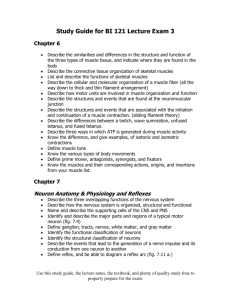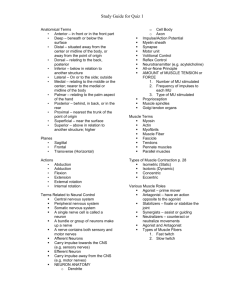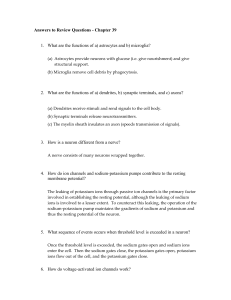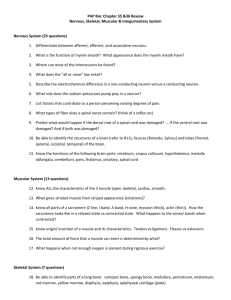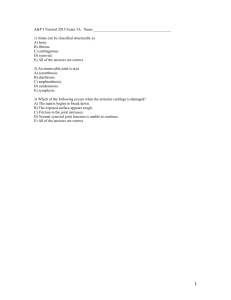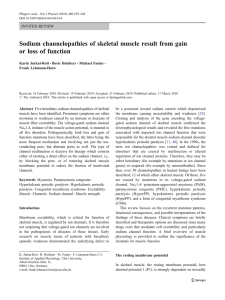nervous quiz AP
advertisement
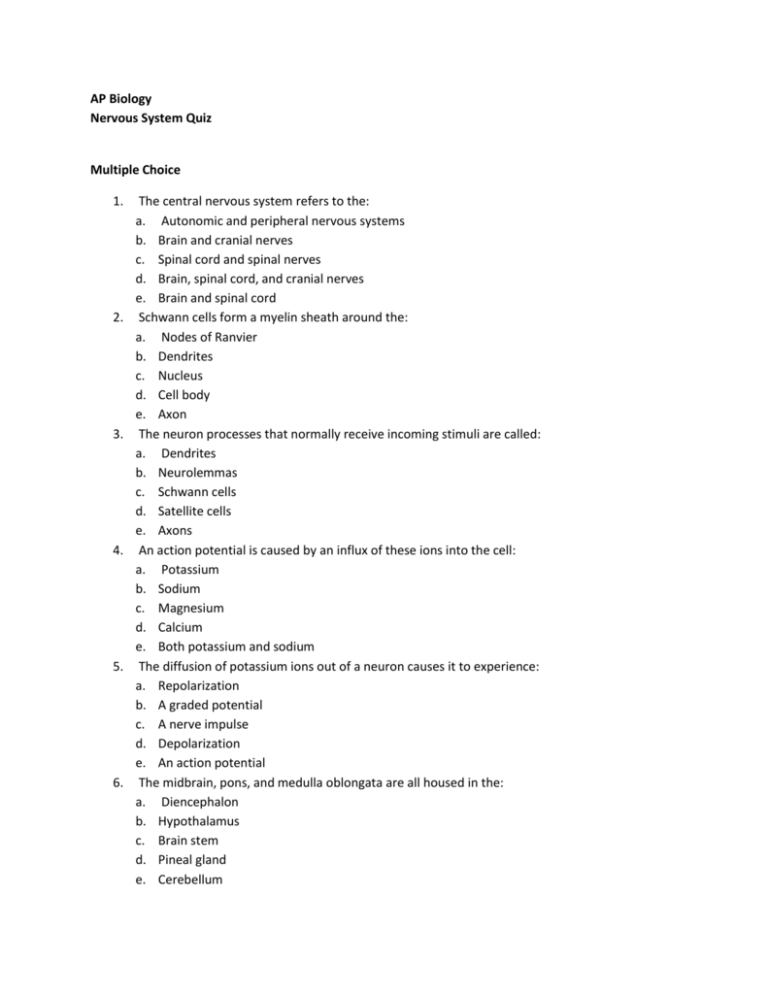
AP Biology Nervous System Quiz Multiple Choice 1. 2. 3. 4. 5. 6. The central nervous system refers to the: a. Autonomic and peripheral nervous systems b. Brain and cranial nerves c. Spinal cord and spinal nerves d. Brain, spinal cord, and cranial nerves e. Brain and spinal cord Schwann cells form a myelin sheath around the: a. Nodes of Ranvier b. Dendrites c. Nucleus d. Cell body e. Axon The neuron processes that normally receive incoming stimuli are called: a. Dendrites b. Neurolemmas c. Schwann cells d. Satellite cells e. Axons An action potential is caused by an influx of these ions into the cell: a. Potassium b. Sodium c. Magnesium d. Calcium e. Both potassium and sodium The diffusion of potassium ions out of a neuron causes it to experience: a. Repolarization b. A graded potential c. A nerve impulse d. Depolarization e. An action potential The midbrain, pons, and medulla oblongata are all housed in the: a. Diencephalon b. Hypothalamus c. Brain stem d. Pineal gland e. Cerebellum 7. Which one of these is NOT directly controlled by the autonomic nervous system? a. Smooth muscle b. Cardiac muscle c. Skeletal muscle d. Glands e. Stomach muscle 8. All of the following are involved in muscle contraction EXCEPT: a. Actin b. Myosin c. Cyclic AMP d. Tropomyosin e. Troponin 9. Which ligand is active at the neuromuscular junction in propagating the action potential into the muscle fiber? a. Sodium b. Acetylcholine c. Calcium d. Potassium 10. What occurs in neurons during the refractory period (hyperpolarization) following an action potential? a. Sodium moves across the neuron from outside to inside through sodium voltage-gated channels b. Sodium moves across the neuron from inside to outside through sodium voltage-gated channels c. The sodium channels are closed and inactivated and there is no movement of sodium ions across the membrane d. The membrane is ready for another stimulus Free Response 1. 2. Describe the steps of an action potential in a neuron. Describe the chemical activities at the neuromuscular junction and the steps of muscle contraction.




